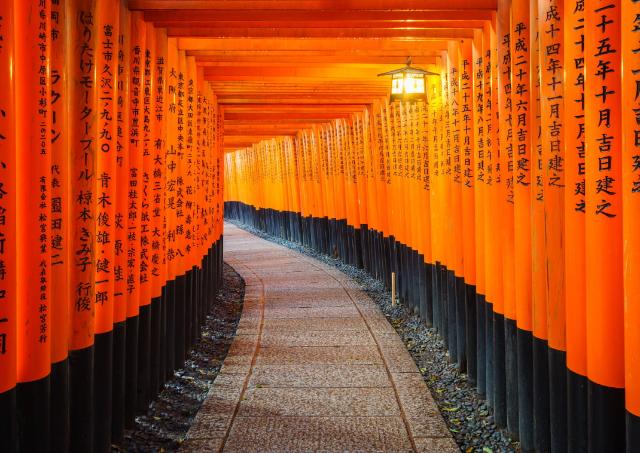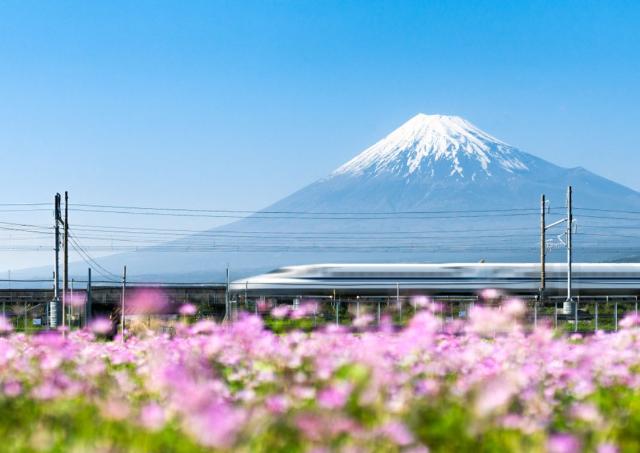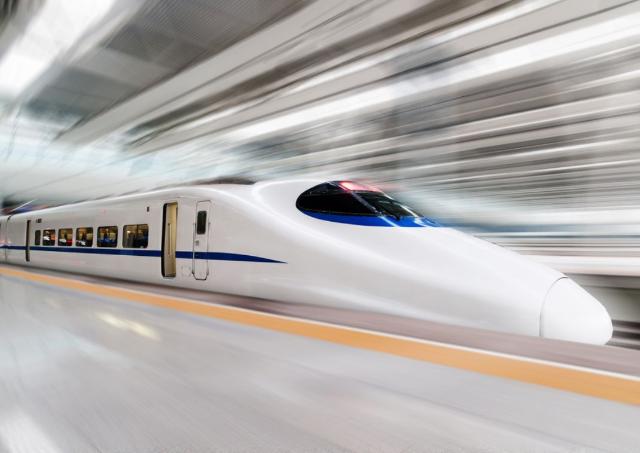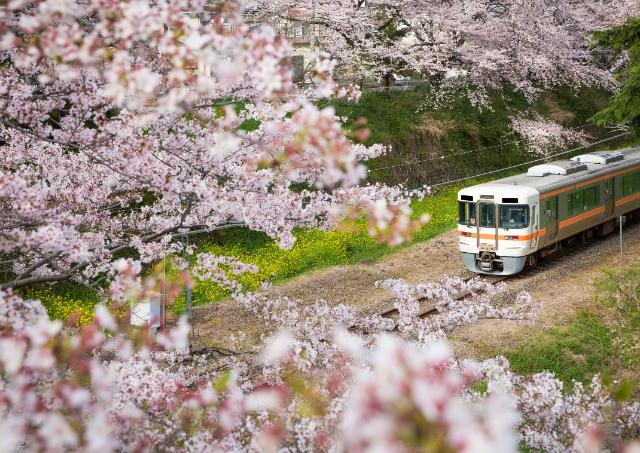The Japan Rail Pass: What You Need to Know
What Does the Japan Rail Pass Cover?
The JR Pass covers most of the JR (Japan Railways) lines across Japan. This includes everything from slower local trains for shorter distances to the limited express trains that bypass small stations, and even the
This means that you can travel from Kyushu, the southern tip of Japan's main island, right up to the northernmost prefecture of Hokkaido. Some non-JR lines are even covered too.
Some of the main services covered by the JR Pass include:
JR Line trains
Nearly all shinkansen routes (except for the fastest Nozomi and Mizuho trains, which require an additional fee)
Tokyo Monorail to/from Haneda Airport
Narita Express to/from Narita Airport
Some local JR Buses (excluding highway buses)
The JR ferry to Miyajima
Nozomi and Mizuho Access
JR Pass holders can access the Nozomi and Mizuho shinkansen on the Tokaido, Sanyo, and Kyushu lines for an additional fee, offering even more flexibility for long-distance traveling. You’ll need to purchase a supplementary ticket to ride these trains.
Here are some of the examples of additional fees:
Tokyo - Kyoto: 4,960 yen
Tokyo - Shin-Osaka: 4,960 yen
Tokyo - Hiroshima: 6,500 yen
Kyoto - Hiroshima: 4,170 yen
Shin-Osaka - Hiroshima: 4,170 yen
What Does the Japan Rail Pass Not Cover?
However, the JR Pass does not cover every element of public transport in Japan. Most notably, it doesn't cover the metro or subway lines. However, in Tokyo there are a few JR lines that cross the city, such as the popular JR Yamanote Line, so you can still use the pass to get around without paying extra for subway fees.
Here are a few notable exceptions that the Japan Rail Pass doesn't cover:
Subway and metro lines
Highway buses
JR trains that run on non-JR tracks
Any transportation in Okinawa
That is not to say that you need to plan routes to avoid extra fees meticulously, but simply to be aware that you may need to pay a little extra here and there if you get on the subway. Just don't jump straight onto the fastest shinkansen!
Japan Rail Pass Price
The JR Pass is available for 7, 14, and 21-day options to suit various trip lengths. Children up to 12 years old get passes for half price, and children under 6 can use JR Lines for free if they do not occupy a seat.
Standard JR Pass
Ideal for a flexible, and cost-effective train travel between multiple cities.
Green Class JR Pass
For added comfort and reserved seating, offering access to the “Green Car” (first-class option) on select trains.
Current prices vary, so check our website for up-to-date rates. Japanspecialist is an official vendor of the Japan Rail Pass and ship in Europe at a flat fee of 12 Euros with UPS in within 1-3 business days.
Is the Japan Rail Pass Cost Effective?
The JR Pass is usually most cost-effective for travellers planning multiple intercity trips and long-distance travel.
Here are a few examples to illustrate potential savings:
Tokyo to Kyoto Round-Trip: The cost of single tickets for this trip is roughly 26,000 yen, compared to the 7-day JR Pass price of 50,000 yen.
Tokyo-Kyoto-Hiroshima-Osaka Loop: If you plan to visit all four cities, the JR Pass is an excellent deal compared to individual tickets.
Kyushu and Kansai Tour: For travellers covering the Kansai region (Osaka, Kyoto, Kobe) and then venturing into Kyushu, the pass offers significant savings.
When you book a tour with us, we always make sure to find the most cost-effective route to maximize savings based on their itinerary. You can contact us to start you adventure in Japan.
Alternatives to the Japan Rail Pass
Regional Rail Passes
If you’re planning to focus on a specific region in Japan rather than covering the entire country, regional rail passes are a great, budget-friendly alternative. Each pass is designed for specific areas and may include local JR lines, shinkansen routes, and even selected bus or ferry services within that region.
Here are a few options:
JR East Pass (Tohoku Area): Perfect for travellers exploring northeastern Japan, including cities like Sendai and Akita. This pass offers unlimited rides on JR East lines in the Tohoku area.
JR West Kansai Pass: A great option for those visiting Osaka, Kyoto, Kobe, and Nara. It covers unlimited travel within the Kansai region on JR lines.
JR Kyushu Rail Pass: Ideal for discovering Kyushu’s cities, like Fukuoka and Nagasaki, this pass offers access to JR-operated trains throughout the Kyushu region.
Hokkaido Rail Pass: Suited for travellers exploring Hokkaido’s beautiful landscapes, including Sapporo and Hakodate. This pass covers most JR lines in Hokkaido.
These regional passes are often cheaper than a nationwide JR Pass and provide flexibility within specific areas, making them a good choice if your travels are regionally focused.
City Transit Cards (e.g., ICOCA, Suica, Pasmo)
For travellers planning to stay within a major city, such as Tokyo, Osaka, or Kyoto, city transit cards like the Suica, Pasmo, or ICOCA cards offer an easy, cashless way to pay for local train, bus, and subway rides.
Suica and Pasmo: These prepaid IC cards are widely used in Tokyo and can be used across most train and bus networks. Simply load money onto the card and tap to enter and exit.
ICOCA: Similar to Suica, ICOCA is more common in the Kansai region (Osaka, Kyoto) but can be used interchangeably in many other areas.
These cards are convenient, don’t require activation or complex planning, and are easy to add and top-up as a digital Transportation Card for Apple Wallet and Google Wallet. They are perfect for short-distance travel within cities.
Single Tickets for Long-Distance Shinkansen Trips
If you only plan to make one or two long-distance trips, purchasing single tickets for shinkansen (bullet train) travel might be more economical than a pass. JR offers reserved and non-reserved seat options, and travellers can opt for the Green Car (first-class) or ordinary seating.
Tokyo to Kyoto or Osaka: A one-way ticket on the Hikari or Kodama shinkansen costs around 13,000 yen, which is often cheaper than the 7-day JR Pass if you’re not making additional long-distance trips.
However, there are several disadvantages to relying on single tickets:
Single tickets can only be purchased in Japan, often on the spot at stations. This can lead to delays, especially during busy times when ticket counters are crowded.
Language barriers may add complications, particularly for travellers unfamiliar with Japanese or English.
Any delays in purchasing tickets could disrupt your schedule and throw off carefully planned itineraries, particularly if you’re traveling on a tight timeline or during peak seasons.
While single tickets allow you to enjoy the shinkansen experience without committing to a multi-day pass, these potential drawbacks should be considered when planning your travel.
Who is the Japan Rail Pass For?
The JR Pass is good to have if you are planning to visit more than one city during your trip to Japan and to travel between those cities via train, shinkansen or limited express trains. But who can use it?
The pass is aimed at international travellers. Japan Railways Group restrictions mean Japanese nationals and residents aren’t eligible.
However, it is important to note that Japanese nationals and international residents, such as those with a work visa, are not eligible for this pass. For more detailed information, please refer to the following link.
Remember a few important steps when buying and using your Japan Rail Pass.
When buying your JR Pass through an official reseller, such as Japanspecialist, you will receive a voucher, known as an “exchange order,” instead of the actual pass. This voucher must be exchanged in Japan for the actual JR Pass. It’s important to note that the voucher is valid for 90 days from the date of issue, so the best time to order your pass is around one month before your departure. Ensure you don’t lose the voucher, as replacements are not provided.
Once in Japan, go to a Japan Rail Pass exchange office to exchange your voucher and activate your Japan Rail Pass. Exchange offices can be found at major JR Stations and international airports, but see this list for specific locations
Once you have the pass, you can use it at the automatic ticket gates or by showing it to the staff at the gates. Activating the pass starts the clock on your ticket's validity, which is counted by days rather than 24-hour periods. If you activate your card at 3 pm on day one, it will stop working at midnight on day seven, not 3 pm on day eight.
If you are planning to use the shinkansen with the JR Pass, it's best to reserve a seat in advance, especially for popular lines or at popular times like Golden Week and cherry blossom season. Seat reservations can be made for free with the JR Pass. For some lines, this can be done online, but you can also reserve at the dedicated shinkansen counters at shinkansen train stations.
How to Reserve Your Seat for JR Trains
You will need to make seat reservations in person after arriving in Japan. Here's how:
First, exchange your voucher for the actual Japan Rail Pass at a JR ticket office.
Then, you can make seat reservations at any JR ticket office (Midori-no-madoguchi) or JR-affiliated travel centre.To reserve seats:
Present your activated Japan Rail Pass at the ticket office.
Inform the staff which train you want to reserve seats on, including date, time, and destination.
Specify if you prefer smoking or non-smoking seats (if applicable).
The staff will issue you a reservation ticket with your train details, car number, and seat number.You can make seat reservations for free with your Japan Rail Pass.
It's possible to reserve seats up to one month in advance of your travel date.
For popular routes or during peak travel seasons, it's advisable to make reservations as early as possible.
You can also use the ticket machines at stations to make reservations, but this option is only available after you've activated your Japan Rail Pass in Japan.
Remember, while seat reservations are recommended, especially for long-distance trips or during busy periods, many trains also offer non-reserved seating that you can use with your Japan Rail Pass without a reservation.
Onboard and Station Wi-Fi Connectivity
Many JR stations and some trains now offer free Wi-Fi, allowing travellers to stay connected and navigate effectively. This can be particularly helpful for those relying on mobile devices for navigation, travel updates, and keeping in touch with loved ones. Look for "Free Wi-Fi" stickers or search for hotspots on your device. Each JR company provides its own Wi-Fi service, such as "JR-East Free Wi-Fi" or "JR West Free Wi-Fi."
Accessibility Information
Japan’s rail system is highly accessible for all travellers. Most major stations have elevators, ramps, accessible bathrooms, and priority seating. Some shinkansen even offer designated wheelchair spaces, providing a smoother experience for travellers with disabilities.
Recommended Apps for Navigating Japan’s Rail System
To make your travel around Japan easier, here are some helpful apps:
Japan Travel by NaviTime: Provides real-time schedules, platform details, and guidance for smooth transfers.
HyperDia: A widely used app for planning train routes and checking schedules.
Google Maps: Great for general navigation and transit information, as it includes live train schedules and walking directions.
JR-EAST Train Info: A valuable app for real-time information on JR East trains, including service updates and platform changes.
These apps are trusted by travellers and locals alike, making navigation around Japan’s rail network easy and accessible.
Cultural Etiquette on Japanese Trains
Japan has a unique train etiquette that visitors are encouraged to respect.
Here are some key points:
Silence: Keep conversations quiet, and avoid talking on the phone.
Seating: Offer seats to elderly, disabled, or pregnant travellers if needed.
Food and Drink: Eating is generally acceptable on shinkansen, but is discouraged on local trains.
Following these customs enhances the travel experience and shows respect for Japanese culture.
Main Points to Note About the Japan Rail Pass
By this point, you probably have a good idea about whether the JR Pass is the right choice for you, but let's recap some of the main points to keep in mind when booking and using your pass:
You can use the JR Pass straight away from Haneda or Narita airports, but once your pass is activated, the clock starts on your designated pass usage period.
The JR Pass does not cover all transport throughout Japan, but it does cover most trains from Kyushu to Hokkaido. See map here.
The JR Pass is most beneficial for multi-city trips.
Seat reservations can be made for free with the JR Pass.
Children can receive a pass for half price, and children under 6 can ride for free if they do not occupy a seat.
While the JR Pass includes most shinkansen services, it does not cover Nozomi and Mizuho trains, which are the most direct options. To use these, you will need to buy an additional ticket.
Essentially, if you are planning to visit multiple cities in Japan, the Japan Rail Pass is for you! If you want to know more, head to our JR Pass reservation page. But if you're getting excited for your first bullet train ride, have a look at some of these awesome castles you can easily visit by shinkansen!




